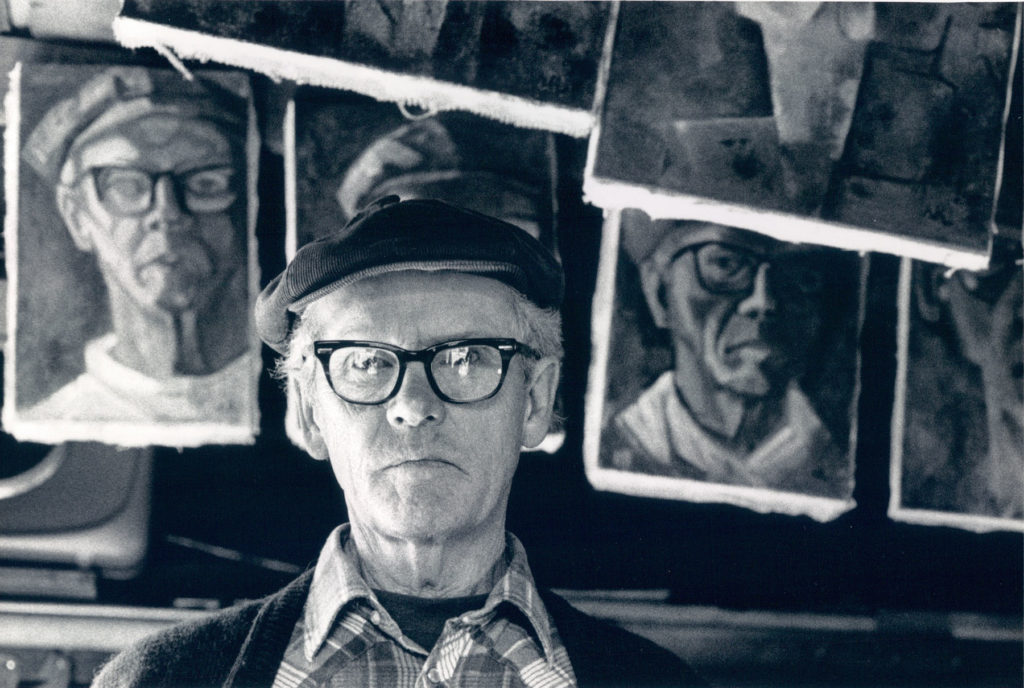Raymond Rice

Raymond C. Rice was a painter, sculptor, mosaicist, printmaker, filmmaker, musician, writer, poet, and teacher. His work was exhibited all over the world, including the California Palace of the Legion of Honor in San Francisco and the Philbrook Museum of Art in Tulsa, Oklahoma, and is held in both public and private collections.
Ray was born in Elkhart, Indiana in 1916. He received his education at the Chicago Art Institute, the Art Students League of New York and the New School for Social Research in New York. In 1940 he was the recipient of a prestigious Louis Comfort Tiffany Foundation Fellowship. The foundation, which originally provided an artist-in-residence program for painters and sculptors, continues to award grants to artists in many disciplines.
After his fellowship, Ray served as a captain in the U.S. Army during World War II. Upon his return from Europe, he focused on his art practice and teaching at the private Putney School in Vermont. Later he moved to Arizona, where he took a teaching job at the Verde School. Eventually he arrived in California and taught at Fresno State College. He also worked as a guest lecturer at the University of California at Berkeley, UC San Diego, the University of Southern California, and the California College of Arts and Crafts. During this time he married Miriam C. Rice and together they grew their family of three daughters, Mira, Rachel, and Felicia.
In the 1950s and 1960s he and other artists, sculptors and architects formed the “Art and Architecture” movement, which integrated sculpture, mosaic and painting with architecture. It originated in California and produced many significant works. Clients and projects included Ford Motor Company, Bank of America, Fresno Air Terminal, Matson Steamship Co., and a number of private residents.
But it was in film that Ray could combine all his talents as an artist, poet, and musician. Friends say filmmaking was his most successful and satisfying field. From 1965 to 1985 he produced more than 40 shorts. He created his own filmmaking process, a combination of using colored inks on acetate and his own handmade equipment. The films won a number of awards and were shown at such venues as UC Berkeley, the Whitney Museum in New York, and on national public television.
In his final years Ray was in his studio every day. Among his projects were collaborations with his daughter, Felicia, on a series of limited edition artists’ books of poetry, and wood strip paintings from 7 inches to 16 feet in length.

